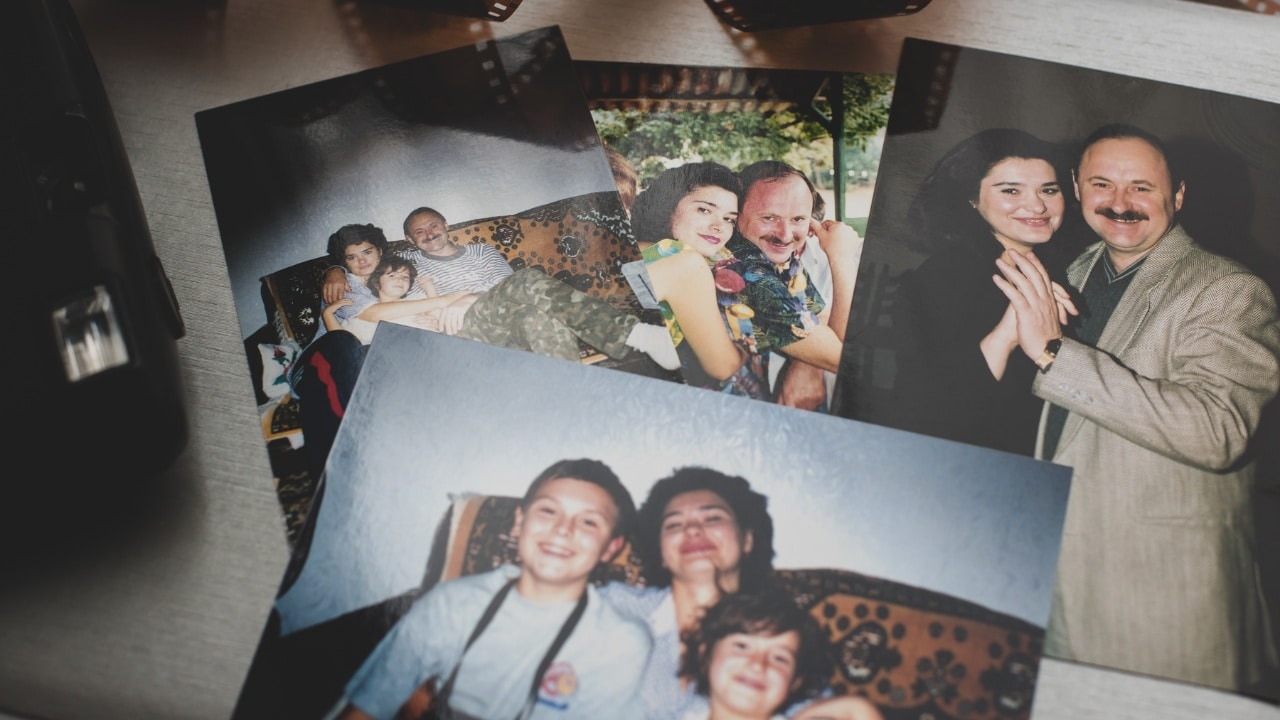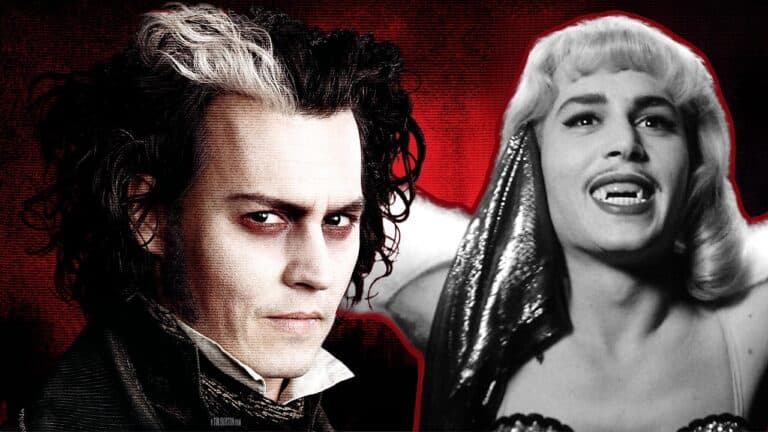24 Things Everyone Misses About the ’80s

Four decades on from the 1980s, there is a nostalgia attached to it, unlike any other decade. Today’s pop culture is filled with tributes back to it, with shows like Stranger Things trying to recreate the aesthetic and ’80s music still widely adored.
But what is it that people from that era specifically miss? How can there be things we’d want back when we have so much more in the 2020s? This list looks back at the areas of ’80s culture that we could all do with a dose of once again.
When creating this list we spoke to those who lived through the ’80s to find their opinions. We’ve included some genuine things and also some ways of life that people wish came back.
You Could Make Dumb Mistakes

Back in the ’80s, you didn’t need to worry about every mistake being documented. You could fall, act like a clown, and dance in public without being turned into a meme. There weren’t cellphones or even CCTV cameras waiting at every corner to expose you. But those who grew up in the ’80s are saying “thank god that wasn’t us” right now.
Kids today have to grow up with every mistake documented. In seconds their behavior can get uploaded onto social media. Even if it’s not a viral video, can you imagine having your teenage blunder years aired constantly to the world and potentially stored online forever?
You Could Escape the News

OK, it’s nice to be connected to the outside world and have everything in the palm of your hand, but there was a time with no social media, no cell phones, and no constant anxiety. It was easier to relax, without worrying about our little rectangles of doom. Even 24-hour news channels didn’t exist.
It was in 1995 that 24/7 news began to grow, with the O.J. Simpson murder case breaking long-standing slow news trends. Although the likes of CNN News launched in 1980, these channels became the primary way to follow the news in the late ’90s and early 2000s (particularly after 9/11).
You Could Be Unreachable

Back in the ’80s, it was enough of an excuse to simply be busy or not home. If someone called you after 8 pm, it wasn’t unusual for it to be strictly for something important. Now, everyone knows your cell phone is within reach. You’re expected to be available at almost all hours. If you don’t answer a call there are still text messages, Facebook Messenger, Instagram, email, WhatsApp, and the rest to spam you.
That level of disconnect is near impossible for most people now, but anyone who lived in the ’80s misses it! Cell phones were already growing in popularity throughout the ’90s but when the iPhone launched the smartphone generation in 2006, they went to a whole new level.
The Great Music

Every era has its own music. But lovers of ’80s hits cling onto them tightly, and with good reason. It was a decade that saw disco fade away and get replaced by post-disco, golden age hip hop, arena rock, glam metal, synth pop, and punk. In 2010, it was voted the most popular decade for music.
David Bowie, New Order, The Smiths, The Cure, Springsteen, N.W.A., Prince, The Beastie Boys, Duran Duran, Blondie, and Michael Jackson: the ’80s was hit after hit of some of the most influential pop music of all time. Some ’80s artists are still touring today (Bruce Springsteen in his 70s is still fantastic), but what we’d give to see them fresh back in the ’80s.
Real MTV

MTV launched on August 1st, 1981 and it declared the new era of music videos. It was a place where you could see the best pop music and the best new music videos. It was also 24/7. But best of all, it was dedicated to music. Not celeb trash talk or reality TV; just music.
MTV aired iconic moments such as Live Aid in 1985 and Spring Break in 1986. It still exists with around 67,000,000 U.S. households paying to watch it. But it’s a far cry from what it once was. As Dire Straits once said, “I want my MTV”. Well, I still want my MTV.
Sane Concert Ticket Prices

Don’t get me wrong, the likes of Madonna and The Rolling Stones were still charging a lot. But it was lightyears away from the eye-watering prices we see today from mainstream artists. Ticketmaster had not yet monopolized the industry and you didn’t have to pay for the ridiculous fees we have now such as a “handling fee”.
Now, we yearn for a time when you didn’t have to worry about scalpers buying every single seat in seconds and then reselling them for truly insane prices. Tickets for Taylor Swift’s Eras tour were sold (yes actually bought) for as much as $200,000 in 2024. That’s a mortgage or a college tuition.
The Magic of Malls

Malls were a social environment back in the ’80s. Even if you weren’t shopping, you could hang out there. Arcades everywhere, fast food, movies, good vibes. Pre-Amazon, this was your solution and you made a day of it. They looked great too, with water features, neon lights, colored decor, and often interesting layouts.
They’re a thing of the past for many people now or just don’t have that same optimistic charm. Sadly, there are only around 1,000 malls left in the US. You can still find some busy malls in major cities but the charm doesn’t even close to what the ’80s offered. They’re gone and likely not coming back.
Meeting at the Airport Gate

Back in the ’80s (and even the ’90s) you could show up at the airport and walk right up to the gate. Security was way more lax, so you could greet or say goodbye to your loved ones in a nicer way. Tell someone born in the ’90s or later this and they’ll struggle to believe you.
It’s crazy to think now, but you could keep your boots and coat on as you walked through a simple metal detector en route to your flight. You could often even get on without even showing ID. Of course, 9/11 changed everything and showed the failings of the lax system, but what a shame it has to be that way.
Roaming Free as a Kid

Kids in the ’80s could get lost. They could roam about with freedom. Almost every suburban ’80s kid in the U.S. will have memories of exploring on their bikes. Firstly, because there was more space to roam in, but also there seemed to be more safety for kids.
Today, the same areas have changed forever. It’s inevitable of course, but those pieces of time are all there, just changed forever. What’s to blame? Helicopter parenting? Less traditional play areas? Or, a loss of natural spaces for play and exploration? The truth is probably a blend of all three.
Saturday Morning Cartoons

Cartoons all morning; that was a Saturday morning for most kids in the ’80s, which was great for the kids and the parents (who could wake up with some relative calm in the house). Remember the Smurfs, the original Scooby-Doo, ThunderCats, DuckTales, and Inspector Gadget?
Of course, cartoons still exist. But there was something about programmed shows presented too early before school that ’80s kids miss deeply. In the ’80s, TV hadn’t quite reached the level of endless quality programming. There was still a lot of dross. So for kids, cartoons offered reliable entertainment — with great storylines, great jokes, and great characters.
Making Plans and Sticking To Them

In the ’80s, you could make plans with someone days in advance and that was that. You’d trust that the other person would show up on time; no need to check in if they’re still coming or receive a message 5 minutes before saying they’ll be late or things have changed.
It was forced upon people in the ’80s, as without cell phones you couldn’t get in touch as easily to keep plans updated. Over time, this social etiquette has changed and faded. Plans change fast, for better or worse. But we guess it’s better to know if someone’s coming, rather than sit at an empty table for an hour!
Earnestness

People in the ’80s were way less cynical. They thought they’d genuinely change the world for the better, build a better future, feed all of Africa, or defeat diseases fast. The world is a far more cynical place now, and often being a good person is seen as virtue signaling.
Live Aid is the best example. In 1985, it saw nearly 200,000 people attend concerts in London and Philadelphia, with a further 1.9 billion watching at home or in movie theaters. An estimated $140 million was raised to fight famine. There are now question marks about where that money went, but the people of the ’80s sure had good intentions that night.
The NES

Released in the US in 1984, the Nintendo Entertainment System (NES) changed video games forever. Suddenly, you didn’t need to go to the arcade (more on that next) to play games; your living room was the arcade. With one or two-player games, this was genuinely revolutionary.
You could play the best games: Super Mario Bros, King Icarus, Kirby’s Adventure and Excitebike. Your little CRT TV became a portal to things your ancestors would’ve thought were witchcraft. Yeah, it’s time to consider getting a NES again.
Arcades

Arcades were formative experiences for teens and kids in the ’80s. Colorful, moody, and filled with all sorts of exotic, electronic sounds and sights, they were a world of joy and freedom, far from the outside world. Classics include Galaga, Battlezone, Tron, and Donkey Kong Jr. Are you missing it yet?
Today, there are still arcades to be found but they’re trying hard to recreate something the ’80s pulled off in style. And that charm is lost; in the ’80s, arcade games were the best games. An arcade machine will never compare to what you can play on your PS5 at home.
Blockbuster

Yeah, we have huge libraries at the click of our TV remote or on Netflix, but there was just something about Blockbuster’s charm you can’t help but miss. Netflix can’t sell popcorn and snacks too, can it? And, sure, the algorithm is helpful but the geeky Blockbuster employee who knew every title under the sun is always going to offer better advice.
Founded in 1985, it was a place to find a film you’d dedicate an evening to. Browsing those shelves was magic and often a family event. You knew you’d be dedicating your evening to it and you had to, because otherwise you’d wasted your money.
Pinball Machines

Pinball was a serious thing. It almost seems absurd now but pinball machines like Firepower, Black Knight, Kiss, Xenon, and Eight Ball Deluxe were super popular. They are hard to find now, but when ’80s folk see one they can’t resist a trip back in time.
For those of you too young to understand (or too old to remember), the object of the game was to score as many points as possible by hitting targets with the ball. When the ball fell into the trap at the bottom of the machine (via gravity), the game ended.
Neon Lights

Neon still exists, especially in big cities, but not in the way it did in the 80s. When the sun was down, it was neon time. It’s now mostly the stuff of sweet nostalgic photographs and mere memories.
The mid to late 80s brought neon production back in huge numbers. It was especially popular channel lettering, which was new at the time. It’s such a relic of the past that now there are even Museums of Neon Art, where they restore old signage and display it to strange neon enthusiasts like myself.
Big Hair

’80s hair just has a unique style. It was big, it was fluffy and it made statements. It was Tina Turner’s giant mane, Robert Smith’s crazy mess (he actually never lost that), and punk mohawks. From blowouts and mullets to quiffs and flattops, ’80s hair just somehow faded away.
Interestingly, some of these trends are actually coming back, which Vogue says is due to a rebellion against perfect beauty standards. So get out your hairspray, because we know you miss ’80s hair. And if you don’t miss the styles, you likely miss having any hair at all.
Finding a Great Deal

Pre-internet, you could find something in a thrift store, yard sale, or store for a good price because the original owner wasn’t scouring the internet for auction prices. You were also less exposed to scalpers and scams trying to re-sell things like collector cards for disgusting prices.
It’s really hard to recreate that sensation today because everyone has access to eBay prices or specific auction sites. Even a yard sale seller knows how to avoid missing out on the maximum price. It probably works both ways too, as a buyer can instantly check if they’re getting ripped off.
Color Was Everywhere

It’s not a cliche that the ’80s were colorful. Everything from clothes and toys to decor and music was colorful. You probably miss the vibrant makeup, colored knit sweaters, ribbons, fluorescent bracelets blush, blush, and more blush.
The ’70s were extremely brown and gray, so it was likely a response to that. No one wants to dress like their parents. But it was also a shift in culture, with the Vietnam War ending and the economy booming, there was a focus on the future and youth.
The Shared Culture

Back in the ’80s, everyone in the same age group would watch the same TV shows and movies because less content was available. The next day at school or college, you could all talk about the show you watched the night before. Even watching TV used to be a family event.
Things are a lot more divided now. The chances are very low that anyone watched the same event last night, outside of live sports shows or election debates. It’s perhaps a reason why it feels extra special these days when generations and cultures come together to watch events like the Olympics.
A World Marketed for Kids

’80s pop culture was massively marketed towards kids. Every popular restaurant had incentives to bring kids in, like special edition collectible toy sets. Kid-friendly media was everywhere, and they were invited into the world.
Another big reason for this shift was that before the Reagan presidency, the U.S. had lots of regulations and rules about advertising to kids. Once that changed, corporations had nothing holding them back. From cartoons and candy to fast food and toys, they could combine products with the TV shows that kids loved the most.
Waiting for Letters To Arrive

Sure it’s great to receive and read messages instantly. But there was a charm in waiting for a letter to arrive. The mail brought hope, mystery, and contact to those you loved far and wide. For most Americans, it was the only way you could communicate with someone on the other side of the world or get in touch in a more formal way than a phone call.
Today, more than 35% of Americans say it’s been more than five years since they wrote and sent a personal letter. Even 15% of American adults have never sent a personal letter. And it’s not just an age thing: only 50% of Americans age 65 or older claim to have sent a letter in the last five years!
Glory Days

If you were around in the ’80s, you probably miss the simple fact that you were younger. But hey, don’t we all? The future was bright. Endless possibilities. Perhaps a lot less doom and gloom than now? But being young and carefree? Experiencing your first relationship? That endless summer?
Nostalgia is a funny thing, of course. It makes the past look far better than it was and while you may miss stuff from the ’80s, I’m sure there’s other stuff you don’t. Remember the future is always open. Springsteen said it perfectly, “Glory days, well they’ll pass you by.”





